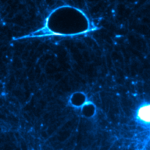Link to Pubmed [PMID] – 21513727
Toxicon 2011 Jun;57(7-8):1008-16
Botulinum neurotoxins induce a prolonged muscle paralysis by specifically blocking the release of neuronal transmitters from peripheral nerve junctions. Potency testing of toxin and antitoxin therapies is entirely dependent on mouse lethality bioassay which is associated with extreme suffering of large numbers of animals to ensure high precision. The mouse phrenic nerve-diaphragm assay is an ex vivo assay that closely mimics in vivo respiratory paralysis offering substantial refinement and reduction in the number of animals used. A range of botulinum antitoxin standards, one licenced product and experimental antitoxins were tested for neutralising potency using ex vivo hemidiaphragm assay and compared with in vivo determined activities. Overall, there was an excellent agreement between neutralising activity detected by the two assay systems and for each toxin serotype using only 4-7 replicates for each product (almost perfect concordance for type A antitoxins: ρ = 0.997, and substantial concordance for type B antitoxins: ρ = 0.991 and type E antitoxins: ρ = 0.964, respectively). These findings confirm that the mouse nerve-diaphragm preparation can provide a functional ex vivo replacement assay for specific, sensitive and precise assessment of toxin and antitoxin activity.

